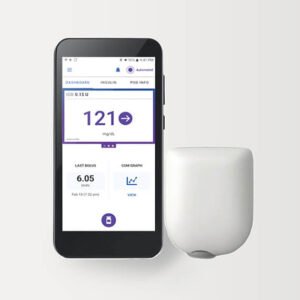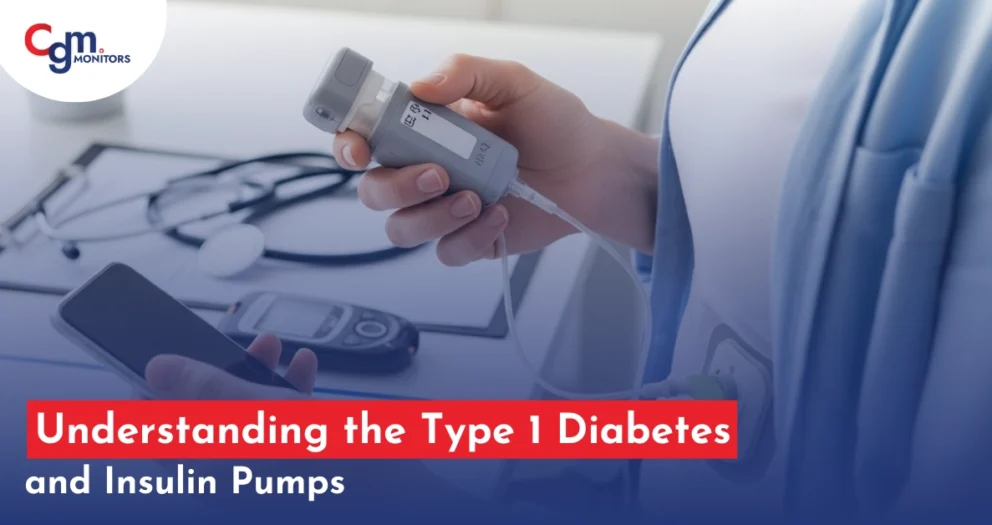Table of content
Diabetes is a condition developed due to the pancreas not creating enough insulin, or the cells in your body becoming less responsive to insulin.
What is type 1 diabetes?
Type 1 diabetes is an auto-immune situation that can and may be formed by genetics and other unidentified factors.
Reasons for type 1 diabetes
External attackers such as injurious bacteria and viruses are accountable for Diabetic people’s immune systems.
In individuals with type 1 diabetes, the immune system faults the body’s healthy cells for external attackers. Type 1 diabetes is an auto-immune response
The immune system outbreaks and removes the insulin-producing beta cells in the pancreas. After these beta cells are demolished, the body is incapable of producing insulin.
Appearance of type 1
Type 1 diabetes is usually diagnosed in children and young people, but it can also occur in grownups. In type 1 diabetes the immune system attacks pancreatic beta cells so that they can no longer produce insulin.
What is type 2 diabetes?
Type 2 diabetes is because of 2 reasons; cells in muscle, liver, and fat become resistant to insulin. As a result, the cells don’t consume enough glucose. The second reason is that the pancreas is unable to produce enough insulin. This leads to diabetes.
Reasons for type 2 diabetes
Type 2 diabetes often occurs with obesity, over time, and a lack of exercise as big hazard factors. You can be diagnosed with either at any age.
Other inherited and ecological factors may also play a vital role. Once you have type 2 diabetes, your pancreas will try to compensate by creating more insulin. Since your body is incapable of correctly using insulin, glucose collects in your circulation.
Researchers aren’t certain why some individuals become insulin resistant and others don’t, but many lifestyle factors may promote it, which includes being lethargic and having excess mass.
Appearance of type 2 diabetes
Type 2 diabetes is more frequently developed as people age, but kids may still have it. In this type, the pancreas makes insulin, but the body cannot use it efficiently. Life factors seem to play a part in its growth. The common Consistent Source of people with diabetes is type 2 diabetes.
Differences between type 1 and type 2 diabetes
There are variances among type 1 and type 2 diabetes, which comprise the signs, causes, and actions. Type 1 diabetes happens when the immune system outbreaks pancreatic beta cells. Type 2 diabetes happens when the body does not use insulin competently.
Type 1 and type 2 diabetes rise when the body does not properly store and use glucose, which is vital for liveliness. This glucose then collects in the blood and does not reach the cells that need it, which leads to serious complications.
Both types of diabetes raise certain complications, such as kidney disease, neurological conditions, vision loss, damage to blood vessels, and cardiovascular disease
How to cure or prevent diabetes?
Controlling blood sugar levels means controlling diabetes. Here are few things you can do to manage your blood sugar levels;
- Regular monitoring.
- Balanced diet
- Limiting carbs intake
- Regular exercise
When it comes to monitoring, CGM devices are helping people with continuous monitoring without the need of multiple fingerpricks throughout the day.
What is CGM? Continuous glucose monitors are commonly known as CGMs. These small sensors are usually worn on the back of your upper arm, abdomen, and buttocks in case of children. This varies for different sensors. The Libre 3 and Dexcom G7 fall among the most famous CGMs at the moment.
Conclusion
There’s presently no cure for type 1 diabetes. People with type 1 diabetes don’t produce insulin, so it must be consumed regularly, and blood sugar levels should be checked on high priority. This hassle can be reduced drastically by switching to a CGM device. The added benefit of CGMs is that some of them also work with automatic insulin delivery pumps. This compatibility is quite advanced and beneficial for many. You may find it useful to discuss this with your healthcare specialist and switch to a CGM and buy one from CGM Monitors.
Type 2 diabetes can be prevented and managed with diet and exercise, but many individuals need extra support. If lifestyle variations aren’t enough, your doctor may recommend medications that help you achieve better health conditions and save your body from further complications.
Frequently Asked Questions
How can diabetic people control type 1 or type 2 diabetes?
Nevertheless, with increasing rates of obesity, young age people are experiencing it as well. Dissimilar type 1 diabetes, you can prevent, and even control, type 2 diabetes with exercise and diet. Losing 7 to 10% of your body weight can aid your body’s insulin usage more efficiently.
Can babies get diabetes genetically?
Type 2 diabetes has a more robust link to family history and heredity than type 1, and studies of look-alikes have shown that inheritances play a very solid role in the development of type 2 diabetes.
Can you get type 1 and type 2 diabetes at the same time?
Dual diabetes is when someone with type 1 diabetes grows insulin resistance, the key feature of type 2 diabetes. Somebody with dual diabetes will always have type 1 diabetes, but the possessions of insulin resistance can be lessened somewhat.
Is type 1 diabetes tougher than type 2?
The two types of diabetes have some significant variances, but there is no clear answer about which one is worse. Diabetes is a disorder in which your body doesn’t make sufficient insulin, or your cells miss sensitivity to insulin.
Is treatment dissimilar for type 1 and type 2?
Type 2 diabetes can have different treatment choices, which include oral medicine or changes in diet or exercise. However, additional injections or medication may be given in some situations to recover your blood sugar control. Type 1 diabetes is preserved with CGM monitors, which means you don’t need to prick your finger multiple times. This, used in combination with exercise and diet, aids those of us with type 1 diabetes to switch our blood sugar.












Write a comment
Your email address will not be published. All fields are required